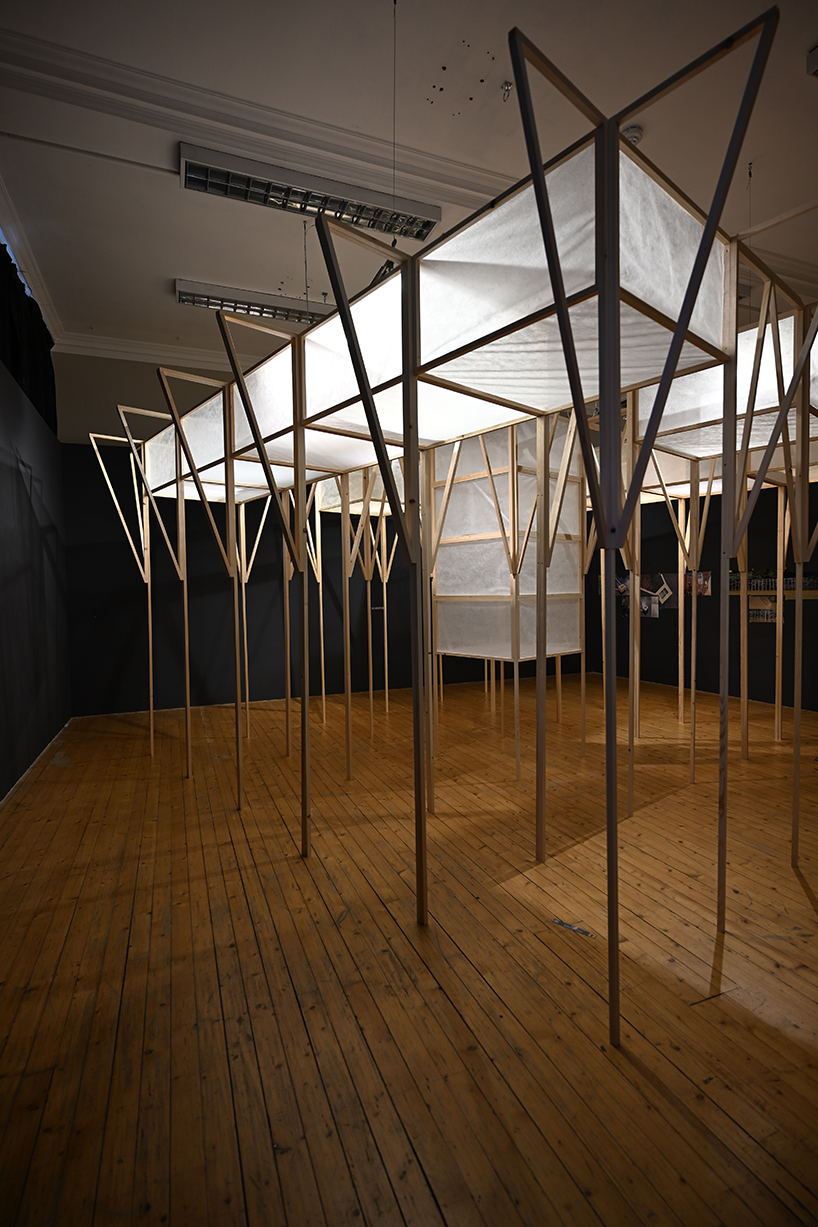Introduction
Diabetic retinopathy (DR), a primary complication of diabetes mellitus, is a leading cause of visual impairment in the working-age population worldwide, including China.1 According to the microangiopathy caused by hyperglycemia, DR can be divided into two stages: nonproliferative DR (NPDR) and proliferative DR (PDR). Chronic hyperglycemia causes retinal vasodilation and hemodynamic changes, damage to endothelial cells and pericytes, and thickening of the vascular basement membrane, ultimately forming retinal microaneurysms and punctate retinal hemorrhage.2 As angiopathy develops, retinal capillaries are not perfused, and retinal hypoxia induces neovascularization, ultimately leading to irreversible vision loss.3,4
Current therapeutic strategies for DR primarily target modifiable risk factors, with systemic management including stringent glycemic control, blood pressure regulation, and lipid-lowering therapy demonstrating clinical efficacy.5 However, the precise molecular mechanisms underlying metabolic dysregulation-induced retinal dysfunction remain unclear.6 Emerging evidence suggests that DR shares inflammatory pathways with systemic diabetic complications, with immune dysregulation being increasingly recognized as a pivotal factor that disrupts retinal immune homeostasis.3 Sustained, low-grade inflammation resulting from immune dysregulation plays a pivotal role in the pathogenesis of DR-related retinal vascular damage. Key manifestations include blood–retinal barrier disruption, macular edema, and pathological neovascularization, all of which contribute to vision-threatening complications.7 Machine learning approaches using clinical and glycemic data may effectively predict DR outcomes.8 The formation and maintenance of the retinal immune balance depend on many factors, among which the inhibitory cell population and cytokines are important regulatory factors. Therefore, investigating the role of immune cells in retinal pathology provides a new avenue for the development of effective therapeutic strategies.
Myeloid-derived suppressor cells (MDSCs), a heterogeneous population of immunoregulatory cells, play critical roles in maintaining immune homeostasis through their immunosuppressive functions.9,10 Extensive research has established associations between MDSC populations and various pathological conditions, with peripheral blood MDSC expansion frequently observed in malignancies, infectious diseases, and chronic inflammatory states. MDSCs exhibit unique functional properties, such as the production of reactive oxygen species, peroxidase, nitric oxide, and anti-inflammatory cytokines, along with angiogenesis. MDSCs have been identified in various non-tumor pathologies, including autoimmune disorders and chronic inflammatory diseases.11 Clinical observations have demonstrated MDSC expansion in patients with type 1 and type 2 diabetes mellitus (T2DM).12,13 A high proportion of MDSCs in retinal tissue can promote retinal vascular inflammation and angiogenesis, which is an important pathological process in DR.13,14 MDSCs are primarily categorized into two subsets: monocytic (M-MDSCs) and granulocytic (G-MDSCs). This study aimed to quantify peripheral blood M-MDSC and G-MDSC levels in patients with DR to investigate their potential involvement in DR pathogenesis.
Materials and Methods
Ethics Statement
This study received ethical approval from the Institutional Review Board at the Affiliated Changshu Hospital of Nantong University (Approval No. 2023-KY-SKQ-01) and adhered to the ethical guidelines outlined in the Declaration of Helsinki, including risk–benefit assessment and participant confidentiality protection. Informed consent was obtained from all participants, and a detailed explanation of the study purpose and voluntary withdrawal rights was provided before blood sample collection.
Sample Size Calculation for the Study
This study was designed as a three-arm, parallel-group trial (NPDR group, PDR group, and healthy control group), with peripheral blood MDSC levels (%) as the primary outcome measure. Based on preliminary experimental data, sample size calculation was performed using the PASS (Power Analysis and Sample Size, version 15.0; NCSS, LLC, Kaysville, UT, USA). A one-way ANOVA model was selected with the following parameters: α = 0.05 (adjusted to α = 0.0167 after Bonferroni correction for multiple comparisons), power = 80%, and effect size (Cohen’s f) = 0.52 (calculated from the group means and pooled standard deviation). The PASS analysis indicated that 19 participants per group would be required.
Patients
From January 2023 to February 2024, 42 patients with T2DM and DR and 20 age- and sex-matched healthy controls were enrolled at the Affiliated Changshu Hospital of Nantong University (Changshu, China). The DR cohort comprised 21 patients with PDR and 21 with NPDR. T2DM diagnosis was confirmed by endocrinologists according to the American Diabetes Association diagnostic criteria. DR staging was performed by ophthalmologists through comprehensive fundus examinations including fundus photography and optical coherence tomography, with severity classified according to the International Clinical Diabetic Retinopathy Severity Scale.
The exclusion criteria were as follows:
- Diagnosis of type 1 diabetes mellitus or other specific diabetes subtypes;
- History of autoimmune disorders, neurodegenerative diseases, or malignancies;
- Previous major cardiovascular/cerebrovascular events (eg, myocardial infarction, ischemic stroke, or cerebral hemorrhage);
- Active systemic infections or inflammatory conditions;
- Use of glucocorticoids or immunosuppressive agents within the past 3 months.
Data and Sample Collection
Demographic and clinical characteristics were systematically collected from all participants. Whole blood samples were obtained in ethylenediaminetetraacetic acid (EDTA)-treated blood collection tubes and processed within 2 h for subsequent analysis of MDSCs via flow cytometry.
Flow Cytometric Analysis
Peripheral blood mononuclear cells (PBMCs) were isolated from anticoagulated whole blood via density gradient centrifugation (Ficoll-Paque™ PLUS density gradient media, Cytiva, Uppsala, Sweden). Cells were washed twice with phosphate-buffered saline (PBS) and resuspended in 100 μL PBS for staining. Samples were incubated with fluorescently labeled antibodies targeting CD45, Lin, CD56, HLA-DR, CD16, CD11b, CD33, CD14, and CD15 (BioLegend, San Diego, CA, USA). Antibodies were used at manufacturer-recommended concentrations, with a volume of 1 μL per antibody per 100 μL. PBMCs were initially gated based on side and forward scatter properties. Thereafter, dead cells were excluded, and the CD45+ viable cell population was gated. The Lin-negative population was identified using Lin/FSC gating, and the CD56−CD16−HLA−DR− population was delineated using logical gating. The MDSC-specific antibodies, CD33 and CD11b were then used to isolate the CD33+CD11b+ population from the previously identified negative population, which was further classified into CD15+ G-MDSCs and CD14+ M-MDSCs. Fluorescence minus one (FMO) controls (CD15−FMO or CD14−FMO) were used. In addition, the blank control group was not treated with reagents. Flow cytometry data were acquired using a Beckman Coulter Dxflex flow cytometer (Beckman Coulter, Inc., CA, USA) and analyzed with the FlowJo software (version 10.6.2; Tree Star Inc., OR, USA). All flow cytometric analyses were conducted by a single experienced technician (Z.Z.) to maintain consistency and reproducibility. Stringent quality control protocols were implemented, including regular assessment of optical alignment, fluidics stability, and fluorescence sensitivity to confirm adherence to manufacturer specifications.
Statistical Analysis
Data are expressed as the mean ± standard deviation for continuous variables or as counts and percentages for categorical variables. The normality of quantitative data was assessed using histograms and the Shapiro–Wilk test. Intergroup comparisons were performed using Student’s t-test or Wilcoxon rank-sum test for normally and non-normally distributed data, respectively. Multiple-group comparisons were performed using a one-way analysis of variance or Kruskal–Wallis test, depending on data distribution. Categorical variables were analyzed using the Pearson chi-square test, with post hoc pairwise comparisons adjusted using the Bonferroni method. Correlations between variables were evaluated using Spearman’s rank correlation coefficient. All statistical analyses were performed using SPSS 25.0 (IBM Corp., Armonk, NY, USA). GraphPad Prism 8.0 (GraphPad Software Inc., San Diego, CA, USA) was used to generate a histogram. Statistical significance was set at a two-sided P-value < 0.05.
Results
Baseline Characteristics
This study included 42 patients with DR, 21 of whom had NPDR. The demographic characteristics of the participants are represented in Table 1. Sex and age distributions did not significantly differ among the NPDR, PDR, and healthy control groups (P = 0.811 and P = 0.163, respectively).
|
Table 1 Baseline Characteristics of the Participants
|
Proportion of Circulating MDSCs in the Three Groups
The MDSCs in the peripheral blood were analyzed via flow cytometry (Figure 1A). The difference in the percentage of peripheral blood M-MDSCs significantly differed among the three groups (Table 2). Multiple comparisons revealed significant differences among the PDR, NPDR, and healthy control groups (P = 0.0063 and P = 0.0056; Figure 1B). No significant differences were observed between the NPDR and healthy control groups. Meanwhile, the percentage of peripheral blood G-MDSCs did not significantly differ among the three groups (P = 0.226; Figure 1C).
 |
Table 2 Proportion of Circulating MDSCs in the Three Groups
|
 |
Figure 1 Fluorescence-activated cell sorting analysis of circulating myeloid-derived suppressor cells (MDSCs) in the blood of the participants. Peripheral blood mononuclear cells were initially gated based on side and forward scatter properties. Thereafter, dead cells were excluded, and the CD45+ viable cell population was gated. The Lin-negative population was identified using Lin/FSC gating. Subsequently, the CD56−CD16−HLA−DR− population was delineated through logical gating. The MDSC-specific antibodies CD33 and CD11b, were then used to isolate the CD33+CD11b+ population from the previously identified negative population, which was further classified into CD15+G-MDSCs and CD14+M-MDSCs. (A) Flow cytometric analysis. (B) Circulating M-MDSC ratios in the nonproliferative diabetic retinopathy (NPDR), proliferative DR (PDR), and healthy control groups. (C) Circulating G-MDSC ratios in the NPDR, PDR, and healthy control groups.
|
Correlations Among the Proportions of Circulating M-MDSC Levels in Patients with DR
The proportion of M-MDSCs in the peripheral blood of patients positively correlated with fasting blood glucose (r = 0.282; P = 0.027) and glycosylated hemoglobin levels (r = 0.329; P = 0.009) (Table 3).
 |
Table 3 Correlation Between Clinical Characteristics and Circulating M-MDSC Levels
|
Discussion
We analyzed the proportions of M-MDSCs and G-MDSCs in the peripheral blood of patients with different stages of DR and their correlation with other factors. The proportion of M-MDSCs in peripheral blood significantly increased in the PDR group and positively correlated with fasting blood glucose and glycosylated hemoglobin levels.
MDSCs are defined as heterogeneous myeloid cell groups at different stages of differentiation. In bone marrow and secondary lymphoid organs, changes or interruptions in the generation and maturation processes of bone marrow progenitor cells can produce MDSCs. The reprogramming of mature myeloid cells in peripheral tissues can produce MDSCs. Under pathological conditions, heterogeneous myeloid cells exhibit immunosuppressive activity, a characteristic observed in cancer as well as in chronic inflammation, infection, autoimmunity, and allergy.15 M-MDSCs are widely recognized for their key role in angiogenesis in tumors. They promote neovascularization and establish and maintain the tumor vascular system by secreting vasoactive substances, cytokines, and chemokines.16,17 The levels of M-MDSCs were elevated in the peripheral blood of patients with PDR, indicating their potential role in retinal neovascularization.
Previous studies have reported an increased proportion of M-MDSCs in the peripheral blood of patients with type 2 diabetes, aligning with the findings of the current study.18,19 Our results further revealed that the levels of M-MDSCs significantly increased in patients with PDR, who had worse glycemic control indices than in those with NPDR. Elevated M-MDSC levels also positively correlated with glycemic control indices. These findings further reveal the core role of M-MDSCs in PDR progression.
The lack of significant differences in G-MDSC levels across study groups may reflect their distinct biological characteristics. As G-MDSCs primarily consist of immature neutrophils that typically expand during acute inflammatory responses or in immunosuppressive tumor microenvironments,15 their dynamics may differ in the context of chronic, low-grade inflammation characteristic of DR. Additionally, the limited sample size may have reduced our power to detect subtle variations in this heterogeneous cell population.
The pathological progression from NPDR to PDR involves complex vascular changes driven by chronic hyperglycemia, including retinal ischemia, increased vascular permeability, and endothelial dysfunction.6 The elevated M-MDSC levels observed in patients with PDR may contribute to this progression through multiple mechanisms. MDSCs play a pivotal role in promoting tumor angiogenesis through multiple mechanisms. These cells secrete a diverse array of proangiogenic factors, including matrix metalloproteinase-9 (MMP-9), vascular endothelial growth factor-A, fibroblast growth factor-2 (FGF-2), platelet-derived growth factor, interleukin-1β (IL-1β), IL-28, transforming growth factor β, epidermal growth factor, and hepatocyte growth factor. Granulocyte colony-stimulating factor enhances myeloid-dependent angiogenesis by stimulating MDSCs to express prokineticin Bv8 through the signal transducer and activator of transcription 3 (STAT3) signaling pathway. The STAT3 signaling in M-MDSCs stimulates the production of proangiogenic factors, including VEGF and FGF-2. Additionally, STAT3-activating factors released from these M-MDSCs can induce STAT3 signaling in endothelial cells, further amplifying neoangiogenesis through the upregulation of VEGF receptor 2 and MMPs.15,20 Furthermore, MDSCs can directly differentiate into endothelial cells, thereby contributing to vascular mimicry formation and establishing an alternative angiogenesis pathway independent of conventional endothelial cell-mediated vessel formation.17 Supporting evidence comes from studies on retinopathy of prematurity (ROP), where flow cytometry revealed significantly higher circulating MDSC levels in 14 infants with ROP compared to controls. In oxygen-induced retinopathy models, MDSCs were markedly elevated during the neovascular phase and preferentially accumulated in pathological lesions. MDSC depletion attenuated retinal vascular occlusion and pathological angiogenesis, suggesting their crucial role in promoting aberrant vessel formation. MDSCs may modulate the inflammatory microenvironment through secretion of pro-inflammatory factors (CCL2, IL-1β, TNF-α), thereby influencing angiogenic processes. While MDSCs regulate microglial recruitment to neovascular areas, their depletion does not affect microglial activation status. Transcriptomic analyses further implicate MDSCs in pathological pathways involving inflammation, immunity, and neuroinflammation. Similarly, in PDR, M-MDSCs may facilitate retinal neovascularization by upregulating proangiogenic factors such as VEGF and MMP-9.21,22 The involvement of MMP9 in PDR pathogenesis is well-documented, and its secretion by M-MDSCs could enhance VEGF bioavailability, further driving pathological angiogenesis.23,24
In patients with diabetes, retinal pigment epithelial, glial, and endothelial cells regulate the production of monocyte chemoattractant protein-1 (MCP-1), which exerts its function through its receptor, C-C chemokine receptor type 2 (CCR2). Monocytes and macrophages express CCR2 and are involved in inflammatory events in DR. In patients with DR, MCP-1 levels in the vitreous humor are higher than those in serum, suggesting that MCP-1 is locally expressed and produced in the eye. In addition, the expression level of MCP-1 in the vitreous humor positively correlates with the severity of DR.25 Therefore, MCP-1 likely drives pathological retinal neovascularization by recruiting M-MDSCs to the retina, which exacerbates vascular leakage and amplifies proangiogenic signaling via VEGF upregulation.
Previous transcriptome sequencing studies have reported that M-MDSCs may regulate retinal neoangiogenesis through inflammation-related pathways.14 Therefore, M-MDSCs may play a role in regulating retinal neovascularization through pathways related to inflammation and immunity.
Despite the findings, this study has certain limitations. The relatively small sample size may limit the generalizability of the results, underscoring the need for larger-scale, multicenter studies to validate these observations. Future investigations could focus on elucidating the temporal dynamics of M-MDSC levels throughout DR progression, emphasizing their potential as predictive biomarkers for the transition from NPDR to PDR. Additionally, comprehensive analyses accounting for confounding factors such as medication use and diabetes duration are warranted. Further mechanistic studies are essential to unravel the regulatory pathways of MDSCs and evaluate their therapeutic potential as novel treatment targets for DR.
Conclusion
This study demonstrated a significant elevation in the proportion of circulating M-MDSCs in patients with PDR, indicating their potential role in the pathogenesis and progression of PDR. Mechanistically, this phenomenon may be closely linked to the proangiogenic effects of retinal M-MDSCs. Furthermore, a strong positive correlation was observed between circulating M-MDSC levels and glycemic control markers, including fasting blood glucose and HbA1c. These findings provide novel insights into the immune mechanisms underlying PDR and underscore the importance of glycemic control in the prevention and management of DR.
Data Sharing Statement
Study data are available from the corresponding author upon reasonable request to protect participant privacy.
Consent for Publication
All participants provided written general broad consent upon hospital admission, which explicitly authorized the use of their anonymized medical data for future research and scientific publication. This study utilized retrospectively collected clinical data under the approval of the Ethics Committee of the Affiliated Changshu Hospital of Nantong University (Approval No. 2023-KY-SKQ-01), with waived requirement for additional study-specific consent.
Author Contributions
All authors contributed to data analysis, drafting or revising the article, have agreed on the journal to which the article will be submitted, gave final approval of the version to be published, and agree to be accountable for all aspects of the work.
Funding
This study was funded by the Suzhou Science and Technology Development Plan Project (SKY2023088), Key Laboratory Open Topic Funding Project in Jiangsu Universities (XZSYSKF2023020), Jiangsu Provincial Natural Science Foundation Project (BK20231201), Open Project of State Key Laboratory of Radiation Medicine of Soochow University (GZK1202305), Nantong University Clinical Medicine Special Research Fund Project (2024JY029), and Jiangsu University Medical Education Collaborative Innovation Funding (JDYY2023099).
Disclosure
The authors declare that there is no conflict of interest regarding the publication of this paper.
References
1. Steinmetz JD, Bourne RRA, Briant PS. GBD 2019 Blindness and Vision Impairment Collaborators, Vision Loss Expert Group of the Global Burden of Disease Study. Causes of blindness and vision impairment in 2020 and trends over 30 years, and prevalence of avoidable blindness in relation to VISION 2020: the right to sight: an analysis for the global burden of disease study. Lancet Glob Health. 2021;9(2):e144–60. doi:10.1016/S2214-109X(20)30489-7
2. Sheng X, Zhang C, Zhao J, et al. Microvascular destabilization and intricated network of the cytokines in diabetic retinopathy: from the perspective of cellular and molecular components. Cell Biosci. 2024;14(1):85. doi:10.1186/s13578-024-01269-7
3. Pan WW, Lin F, Fort PE. The innate immune system in diabetic retinopathy. Prog Retin Eye Res. 2021;84:100940. doi:10.1016/j.preteyeres.2021.100940
4. Lei Y, Wang Y, Tang S, Yang J, Lai D, Qiu Q. The adaptive immune system in the retina of diabetics. Surv Ophthalmol. 2025;70(2):241–254. doi:10.1016/j.survophthal.2024.11.005
5. Cheung N, Mitchell P, Wong TY. Diabetic retinopathy. Lancet. 2010;376(9735):124–136. doi:10.1016/S0140-6736(09)62124-3
6. Antonetti DA, Silva PS, Stitt AW. Current understanding of the molecular and cellular pathology of diabetic retinopathy. Nat Rev Endocrinol. 2021;17(4):195–206. doi:10.1038/s41574-020-00451-4
7. Mesquida M, Drawnel F, Fauser S. The role of inflammation in diabetic eye disease. Semin Immunopathol. 2019;41(4):427–445. doi:10.1007/s00281-019-00750-7
8. Montaser E, Shah VN. Prediction of incident diabetic retinopathy in adults with type 1 diabetes using machine learning approach: an exploratory study. J Diabetes Sci Technol. 2024;19322968241292369.
9. Bronte V, Brandau S, Chen S-H, et al. Recommendations for myeloid-derived suppressor cell nomenclature and characterization standards. Nat Commun. 2016;7(1):12150. doi:10.1038/ncomms12150
10. Zhou J, Zhang M, Ju X, et al. Increased monocytic myeloid-derived suppressor cells in type 2 diabetes correlate with hyperglycemic and was a risk factor of infection and tumor occurrence. Sci Rep. 2024;14(1):4384. doi:10.1038/s41598-024-54496-w
11. Sendo S, Saegusa J, Morinobu A. Myeloid-derived suppressor cells in non-neoplastic inflamed organs. Inflamm Regen. 2018;38(1):19. doi:10.1186/s41232-018-0076-7
12. F W-L, F J, B J, Ma S. Myeloid-derived suppressor cells are increased in frequency but not maximally suppressive in peripheral blood of type 1 diabetes mellitus patients. Clin Immunol. 2014;153.
13. Ghemiș L, Goriuc A, Minea B, et al. Myeloid-derived suppressor cells (MDSCs) and obesity-induced inflammation in type 2 diabetes. Diagnostics. 2024;14(21):2453. doi:10.3390/diagnostics14212453
14. Wu X, Zhong L, Yu J, et al. MDSCs promote pathological angiogenesis in ocular neovascular disease. Biomed Pharmacother. 2024;178:117222. doi:10.1016/j.biopha.2024.117222
15. Lasser SA, Ozbay Kurt FG, Arkhypov I, Utikal J, Umansky V. Myeloid-derived suppressor cells in cancer and cancer therapy. Nat Rev Clin Oncol. 2024;21(2):147–164. doi:10.1038/s41571-023-00846-y
16. Zalpoor H, Aziziyan F, Liaghat M, et al. The roles of metabolic profiles and intracellular signaling pathways of tumor microenvironment cells in angiogenesis of solid tumors. Cell Commun Signal. 2022;20(1):186. doi:10.1186/s12964-022-00951-y
17. Yang F, Lee G, Fan Y. Navigating tumor angiogenesis: therapeutic perspectives and myeloid cell regulation mechanism. Angiogenesis. 2024;27(3):333–349. doi:10.1007/s10456-024-09913-z
18. Fernández-Ruiz JC, Galindo-De Ávila JC, Martínez-Fierro ML, et al. Myeloid-derived suppressor cells show different frequencies in diabetics and subjects with arterial hypertension. J Diabetes Res. 2019;2019:1568457. doi:10.1155/2019/1568457
19. Wang S, Tan Q, Hou Y, Dou H. Emerging roles of myeloid-derived suppressor cells in diabetes. Front Pharmacol. 2021;12:798320. doi:10.3389/fphar.2021.798320
20. Kujawski M, Kortylewski M, Lee H, Herrmann A, Kay H, Yu H. Stat3 mediates myeloid cell-dependent tumor angiogenesis in mice. J Clin Invest. 2008;118(10):3367–3377. doi:10.1172/JCI35213
21. Du R, Lu KV, Petritsch C, et al. HIF1alpha induces the recruitment of bone marrow-derived vascular modulatory cells to regulate tumor angiogenesis and invasion. Cancer Cell. 2008;13(3):206–220. doi:10.1016/j.ccr.2008.01.034
22. Ahn G-O, Brown JM. Matrix metalloproteinase-9 is required for tumor vasculogenesis but not for angiogenesis: role of bone marrow-derived myelomonocytic cells. Cancer Cell. 2008;13(3):193–205. doi:10.1016/j.ccr.2007.11.032
23. Singh K, Goyal P, Singh M, et al. Association of functional SNP-1562C > T in MMP9 promoter with proliferative diabetic retinopathy in north Indian type 2 diabetes mellitus patients. J Diabetes Complications. 2017;31(12):1648–1651. doi:10.1016/j.jdiacomp.2017.08.010
24. Jayashree K, Yasir M, Senthilkumar GP, Ramesh Babu K, Mehalingam V, Mohanraj PS. Circulating matrix modulators (MMP-9 and TIMP-1) and their association with severity of diabetic retinopathy. Diabetes Metab Syndr. 2018;12(6):869–873. doi:10.1016/j.dsx.2018.05.006
25. Taghavi Y, Hassanshahi G, Kounis NG, Koniari I, Khorramdelazad H. Monocyte chemoattractant protein-1 (MCP-1/CCL2) in diabetic retinopathy: latest evidence and clinical considerations. J Cell Commun Signal. 2019;13(4):451–462. doi:10.1007/s12079-018-00500-8














